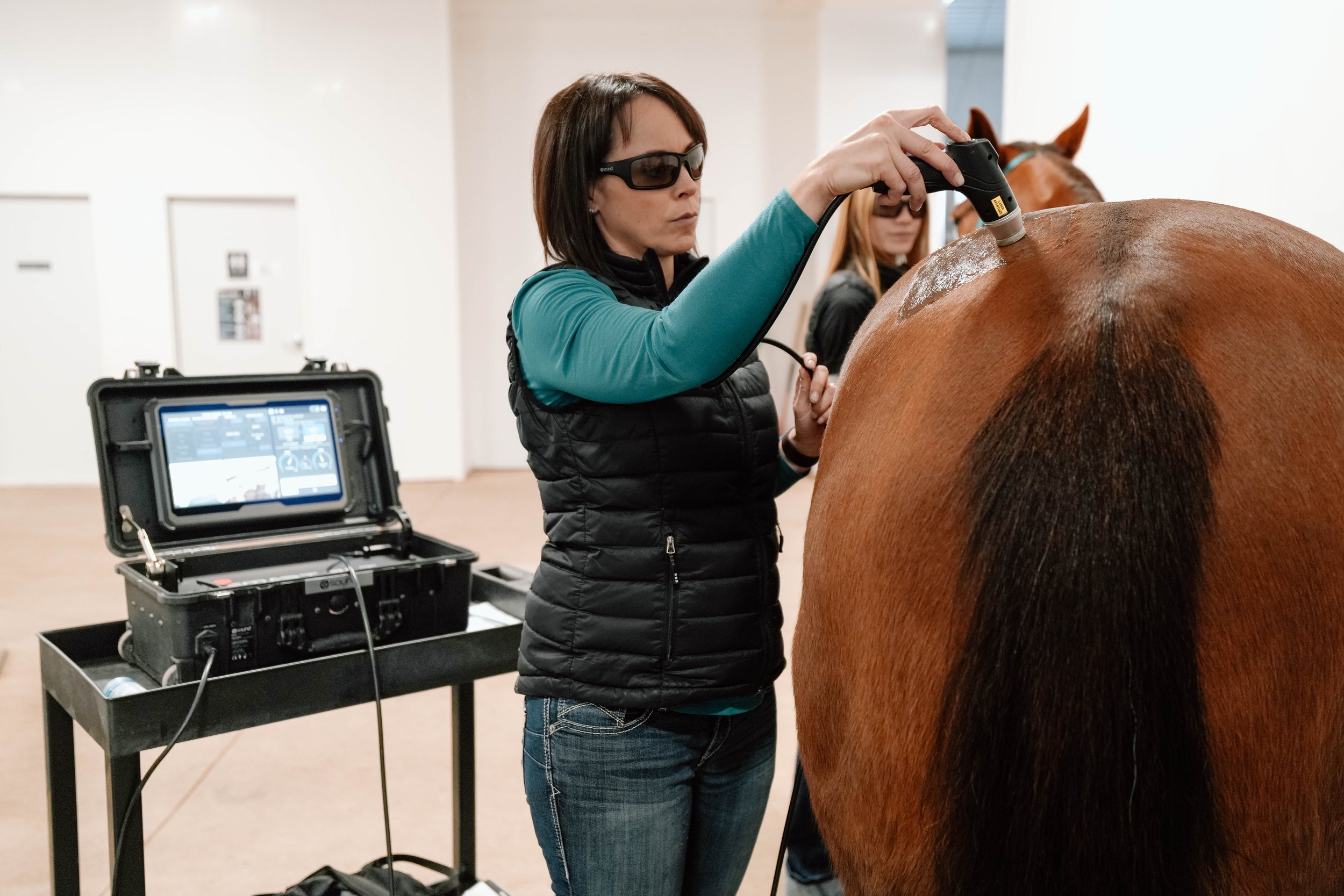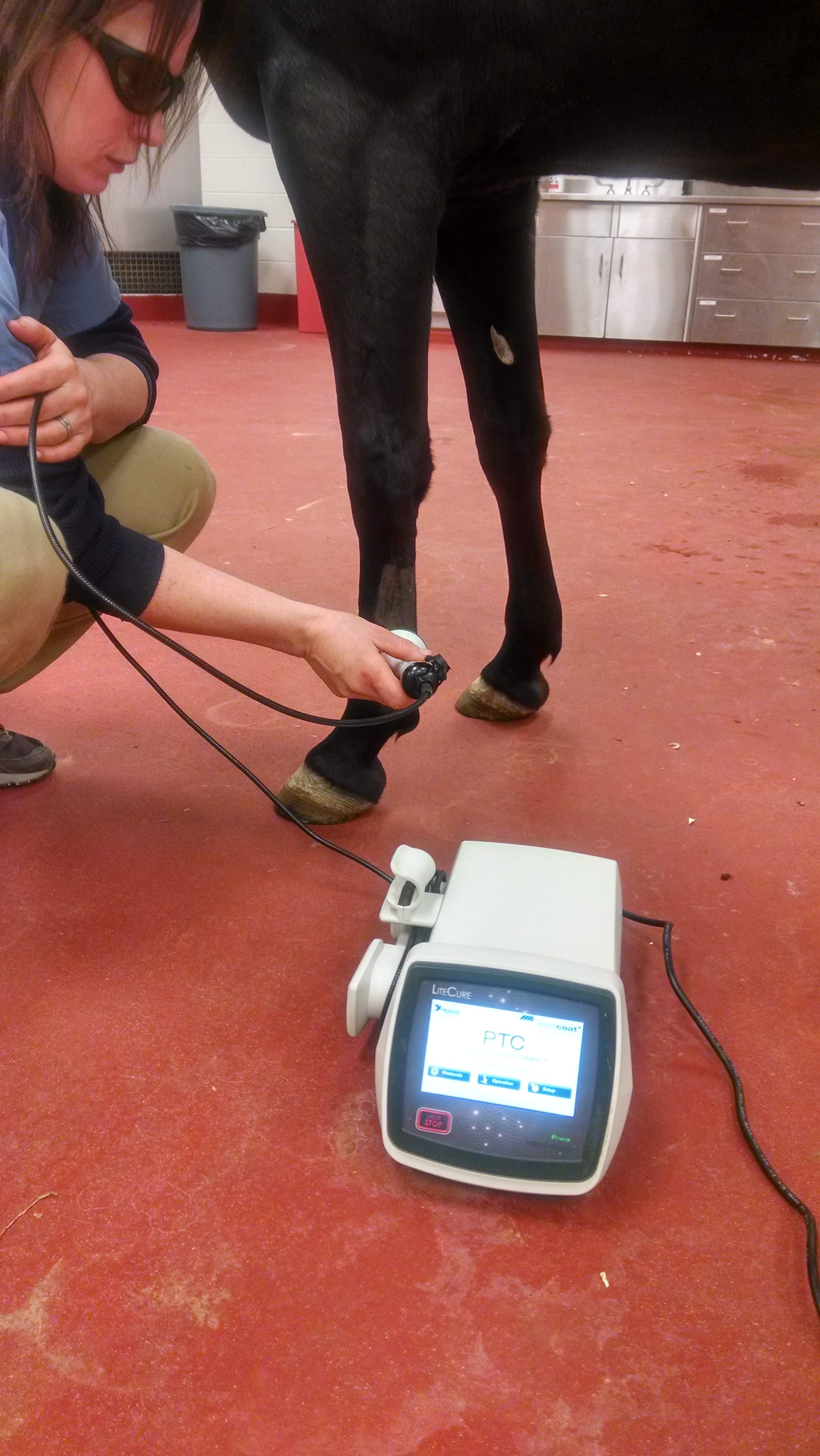Exactly How Laser Treatment in Equine Therapy Is Revolutionizing Veterinary Look After Horses
Laser treatment has actually emerged as a transformative strategy in equine veterinary care, giving a non-invasive service that quickens healing and improves total health. Leveraging exact light wavelengths, this cutting-edge therapy stimulates cellular regrowth, decreases swelling, and minimizes pain. Its effectiveness expands from bone and joint injuries to chronic conditions like osteo arthritis, dramatically enhancing flexibility and life quality for equines. The transportability and flexibility of laser treatment tools even more highlight their expanding necessity amongst veterinarians. As we check out the complex technicians and real-world successes, the extensive influence on equine medical methods comes to be significantly evident.

Recognizing Laser Treatment
Comprehending laser therapy is important for valuing its duty in equine treatment. Laser therapy, additionally referred to as photobiomodulation, includes the application of particular wavelengths of light to tissues, which can cause different biological results. This restorative method takes advantage of the power of light energy to penetrate the skin and underlying tissues, boosting mobile procedures and boosting cells repair work.
The technology behind laser treatment is grounded in the concept of photochemistry, where photons are taken in by chromophores within cells, leading to raised ATP manufacturing and modulation of responsive oxygen species. This, subsequently, promotes mobile expansion, decreases swelling, and speeds up healing. Vet practitioners make use of different sorts of lasers, consisting of low-level lasers (LLLT) and high-power Class IV lasers, depending upon the specific healing objectives and the nature of the equine problem being treated.
Various laser wavelengths and power settings are meticulously chosen to target various tissue midsts and attain preferred clinical end results. Security protocols are vital, as incorrect use can result in thermal damages or suboptimal therapeutic results. Thus, a comprehensive understanding of laser treatment's systems and applications is essential for its reliable application in equine vet practice.
Benefits for Horse Wellness
The myriad benefits of laser therapy for equine health encompass boosted healing, discomfort reduction, and boosted wheelchair. This advanced treatment method leverages details wavelengths of light to penetrate tissues, promoting mobile feature and promoting rapid tissue repair service. The non-invasive nature of laser treatment makes certain marginal stress and discomfort for the horse, assisting in a smoother recuperation procedure.

Enhanced mobility is an additional essential advantage, especially for efficiency and functioning horses. By lowering inflammation and pain, and improving tissue fixing, laser therapy aids in bring back joint function and muscular tissue versatility. The collective impact of these benefits is not just a quicker return to regular activity yet likewise an overall improvement in the equine's lifestyle. Hence, laser therapy stands as a transformative device in modern horse veterinary treatment.
Usual Problems Treated
Laser therapy has actually arised as a flexible treatment choice for a variety of usual equine conditions. Among these, bone and joint see this page injuries are particularly responsive to laser therapy. Soft cells injuries, such as tendonitis and ligament strains, take advantage of the anti-inflammatory and analgesic impacts of laser therapies, which accelerate healing and minimize discomfort. Additionally, laser therapy is reliable for problems like osteoarthritis, where it assists alleviate joint inflammation and promote cells fixing.
Wound monitoring is an additional area where laser treatment has shown substantial assurance. Persistent injuries or slow-healing abscess can be specifically tough in steeds, yet laser treatment boosts mobile regrowth and boosts blood flow, therefore quickening the recovery procedure. Laser treatments have been successfully employed in taking care of hoof conditions such as laminitis and abscesses, reducing pain and promoting much faster recovery.
Horse professional athletes frequently struggle with performance-related issues like muscle soreness and stress fractures. Laser treatment help in lowering muscular tissue exhaustion and expedites the recovery of micro-injuries, thus ensuring that steeds return to peak efficiency extra promptly. By attending to these diverse conditions, laser treatment is transforming the landscape of vet care, giving a non-invasive, efficient option to traditional therapies.
Technology Behind Laser Therapy

Laser tools used in vet medication typically make use of low-level laser therapy (LLLT) or chilly laser therapy. Unlike high-powered surgical lasers, these tools operate at reduced power degrees, enhancing therapeutic benefits while minimizing thermal damages. The energy from the laser light boosts adenosine triphosphate (ATP) production, enhances cellular metabolic process, and accelerates cells repair processes.
Modern laser therapy devices for equine therapy is created with adjustable settings to satisfy the particular requirements of different tissues and conditions. Equine Therapy. Specifications such as wavelength, power thickness, and therapy period can be carefully tuned, offering tailored therapeutic services. Furthermore, innovations in laser modern technology have actually brought about the development of mobile, portable tools, making it less complicated for vets to give therapy in a selection of setups, from centers to stables. This technological advancement is a foundation in the changing of equine vet care.
Success Stories and Study
Showcasing the tangible advantages of laser treatment, various success stories and study illuminate its transformative influence on equine wellness. One such instance entails a purebred racehorse suffering from persistent tendonitis. Standard treatments produced very little improvement, but after incorporating laser therapy into the regimen, the steed displayed substantial decreases in inflammation and discomfort within weeks, ultimately going back to competitive racing.
An additional compelling example includes a dressage steed diagnosed with serious back discomfort, restricting its performance. A veterinary group used low-level laser treatment (LLLT) to target the inflamed areas, leading to significant renovation in flexibility and a significant decline in pain. Over several sessions, the equine restored its peak type, showcasing the efficiency of laser therapy in attending to bone and joint issues.
In addition, a research study conducted at a leading equine facility taken a look at 50 steeds with numerous soft cells injuries treated with laser treatment. The outcomes stood out: 85% of the steeds showed accelerated healing times and improved movement. These situations highlight the adaptability and performance of laser treatment in equine medication, using a non-invasive, scientifically-backed technique to boosting recuperation and efficiency in equines.
Final Thought
Laser treatment is reinventing equine vet treatment useful link by giving a non-invasive therapy that increases recovery, reduces inflammation, and eases discomfort. With its efficiency in treating a variety of conditions, from bone and joint injuries to persistent conditions like osteoarthritis, this technology significantly improves equine health and wellness and mobility. The transportability and flexibility of laser therapy even more emphasize its transformative influence on veterinary practices, solidifying its role as an important tool in contemporary equine medical care.